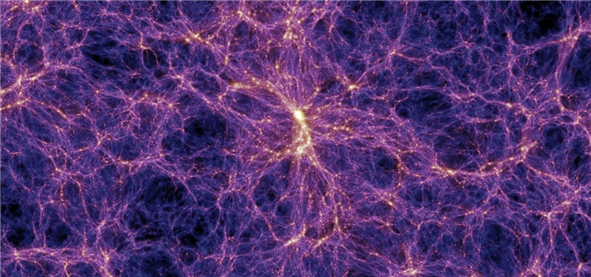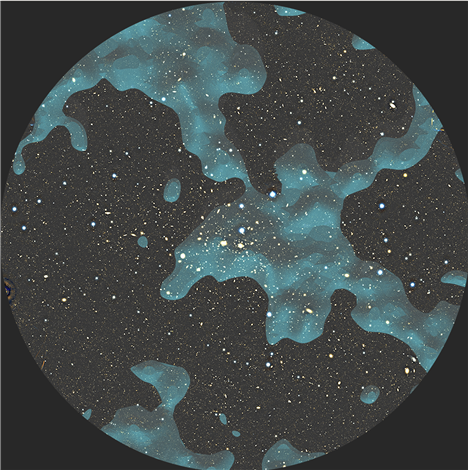Dark Matter Web-like Structures That Form the Scaffolding of the Universe Detected
Professor M. James Jee’s laboratory detects dark matter web-like structures that form the scaffolding of the Universe
Direct observation of dark matter filaments 300 million light years away using gravitational lensing
New insights into the formation and evolution of the Universe
The laboratory of Professor M. James Jee in the Department of Astronomy, College of Science, is the first in the world to detect the web-like dark matter filaments that form the scaffolding of the Universe, using gravitational lensing.
According to astrophysical theory, the entire Universe is connected by a complex web-like structure made of dark matter. This structure consists of intertwined filaments, similar to fine threads, and galaxy clusters over 1 quadrillion times the mass of the Sun form at the intersections between filaments. However, because this web structure is made of invisible dark matter, the field of Astronomy has only been able to indirectly surmise its existence based on observations of the galaxy clusters that form along its filaments and intersections.

[Image 1. Massive structure of the Universe based on computational experiments. The purple web-like structure is called the “cosmic web” and is an essential prediction based on modern standard cosmological theory (source: The Millennium Simulation).]
Dark matter is a substance estimated to constitute around 25% of the Universe. However, because it neither emits light nor absorbs or reflects external light, it can only be perceived through gravity. As such, Professor Jee’s research team used gravitational lensing observations from the Subaru Telescope at the Mauna Kea Observatories in Hawaii.
By measuring the amount of refraction of background light owing to the gravity of foreground objects via a process known as gravitational lensing, the mass of the foreground objects can be measured. Although dark matter is invisible, it has gravity, and foreground dark matter causes light to bend; hence, gravitational lensing is an extremely useful tool for detecting dark matter.
The bending of light causes galaxies in the background to appear distorted. Indeed, for individual galaxies, determining whether this is simply its original appearance, whether this appearance is due to optical error from imperfect telescopes, or whether this appearance is truly the result of gravitational lensing, is extremely difficult. This means that successful detection of gravitational lensing depends on the extent to which the shapes of galaxies can be accurately measured. This is made possible by measuring, at high density, the appearances of hundreds of thousands of galaxies using the latest optical image processing and big data statistical analysis techniques.
When the observational data obtained via gravitational lensing was analyzed, Professor Jee’s laboratory successfully detected dark matter filaments extending from the Coma cluster that is located 320 million light-years from Earth.

[Image 2. Dark matter filaments discovered by the research team. The green cloud-like shapes are the Coma cluster and dark matter filaments. The massive structure of the filaments can be seen entering the Coma cluster at the center of the photograph.]
Professor Jee stated that, “Our findings demonstrate, through direct observation, the evolution of the Universe’s macrostructure that was previously known only by theory. We anticipate that our findings will contribute greatly to our understanding of the origins and evolution of the Universe as well as validation of standard cosmological theory.”
This research was funded by the National Research Foundation of Korea’s Basic Research Laboratory Program and the Mid-Career Researcher Program , and conducted by Professor M. James Jee (corresponding author), researcher HyeongHan Kim (first author), researcher Sangjun Cha (co-author), and researcher Hyejeon Cho (co-author). The findings were published in Nature Astronomy (IF 14.1), a leading Astronomy journal, on January 5th (local time).
Find out more:
Title of original article: Weak-lensing detection of intracluster filaments in the Coma cluster
DOI: https://www.nature.com/articles/s41550-023-02164-w
Journal: Nature Astronomy
Contact corresponding author: Prof. M. James Jee (mkjee@yonsei.ac.kr)
Recommended Articles
Professor Byeong-Su Kim
New study demonstrates that “deformable” electronics are not a stretch
Professor Yeonjin Yi